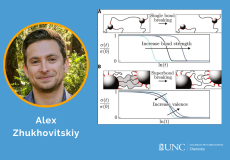Department News

When James Custer arrived at UNC-Chapel Hill to begin his Ph.D. in chemistry, he didn’t know he was about to launch a career that would take him from high-stakes scientific discovery to global clean energy negotiations.
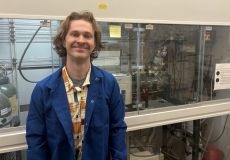
Will Hemmingson, a Ph.D. student in the Department of Chemistry, presented his team’s latest work: a particle suspension reactor that uses sunlight, silicon nanowires and clever chemistry to make carbon dioxide reduction more efficient, affordable and durable than previous designs.

Each holiday season, UNC chemist Erin Baker and her lab trade data analysis for presents — rallying fellow Tar Heels to raise money for Toys for Tots and Coats for Kids.
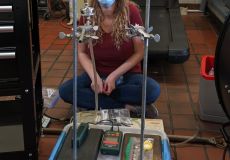
Gabrielle West, a Ph.D. student in the Department of Chemistry at the University of North Carolina, recently received a certificate of merit from the Environmental division at the American Chemical Society (ACS) Fall 2025 conference in Washington, D.C.
Research
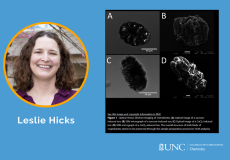
Herein, an approach for discriminating between tardigrade morphological states is developed and utilized to compare sucrose- and CaCl2-induced tuns, using the model species Hypsibius exemplaris.
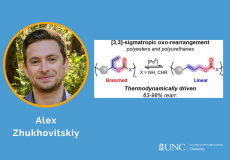
Herein, we disclose a backbone rearrangement approach to tune the short-chain branching of polymers.
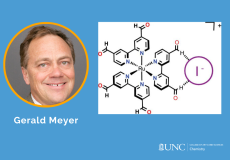
A new homoleptic Ru polypyridyl complex bearing two aldehyde groups on each bipyridine ligand, [Ru(dab)3](PF6)2, where dab is 4,4′-dicarbaldehyde-2,2′-bipyridine, was synthesized, characterized, and utilized for iodide photo-oxidation studies.
Our Faculty
Faculty in the Department of Chemistry at the University of North Carolina help define solutions to the pressing scientific problems of the day. A significant and key component of our department’s strategic plan is to cultivate the next generation of scientific leadership. Faculty, from our assistant professors to our most senior and distinguished colleagues, are international leaders in their subfields, garnering local, national, and international recognition and accolades commensurate with their excellence in research and teaching.
Our Graduate Students
Our graduate students form the next generation of scientific leaders. As a department, we seek to recruit and mentor a diverse cohort of students dedicated to excellence in the classroom and research laboratory. The creativity, drive, collegiality, and accomplishments of our graduate students in tackling difficult scientific problems are significant reasons why UNC is an international leader in chemical research.



